Knoyle Place: The magnificent garden in the village where Christopher Wren grew up
The more you look at Knoyle Place — the Wiltshire home of the Comtesse de La Morinière — the more there is to admire. Charles Quest-Ritson takes a look at this magnificent garden, which has been subtly and beautifully enhanced in recent decades. Photographs by Mimi Connolly.
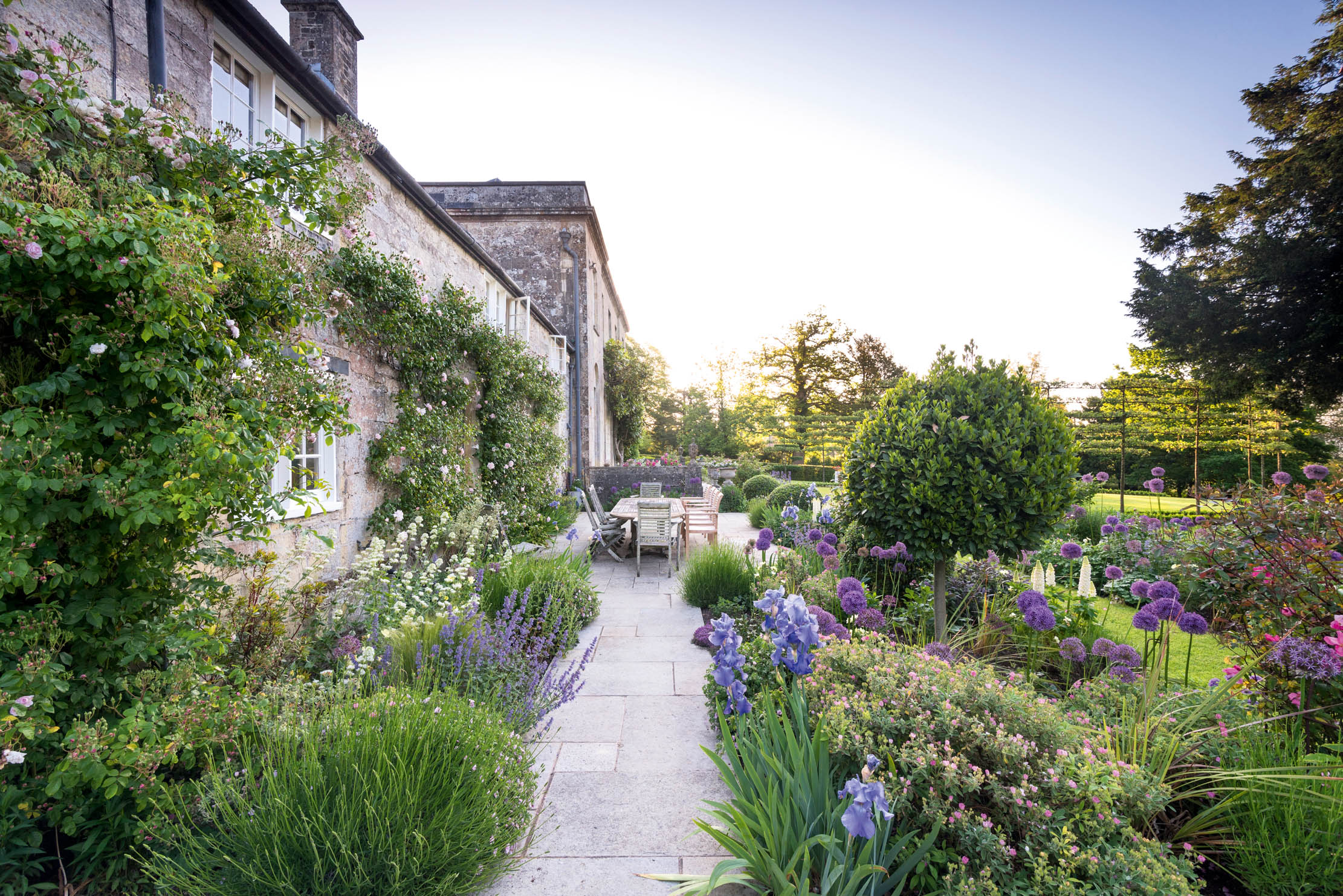

The village of East Knoyle sits on a slope of greensand above the Blackmore Vale near Shaftesbury. Its villagers are proud of its most famous inhabitant, Sir Christopher Wren, whose father was the rector of the parish when the future architect of St Paul’s was born in 1632.
Attached to the Georgian façade of the elegant rectory that we see today is an older building and it is there that Christopher lived as a child, although a fire shortly before his birth that destroyed part of the building meant he was actually born in a nearby cottage. When he was eight, his father, by then Dean of Windsor, moved his family to join him in Berkshire.
The rectory was sold off by the Salisbury Diocese in 1935 and, in due course, became known as Knoyle Place. In 1992, it was bought by Comte and Comtesse Hervé Le Bault de La Morinière and, together, they developed a magnificent garden until Hervé died prematurely last December. The de La Morinières have always given credit, however, to their predecessors, notably Sir Guy Fison, who owned the house until 1964, and Sir John Eden (later Lord Eden of Winton), who was MP for West Bournemouth and a nephew of Sir Anthony Eden. Eden was a keen dendrologist and many of the finer trees in the garden, especially in the woodland, date from his ownership. It was he who planted the immensely tall double cherry (Prunus avium ‘Plena’) on the edge of the woodland garden, whereas the Fisons planted the stately row of magnolias and many of the rhododendrons on the hillside behind the house.
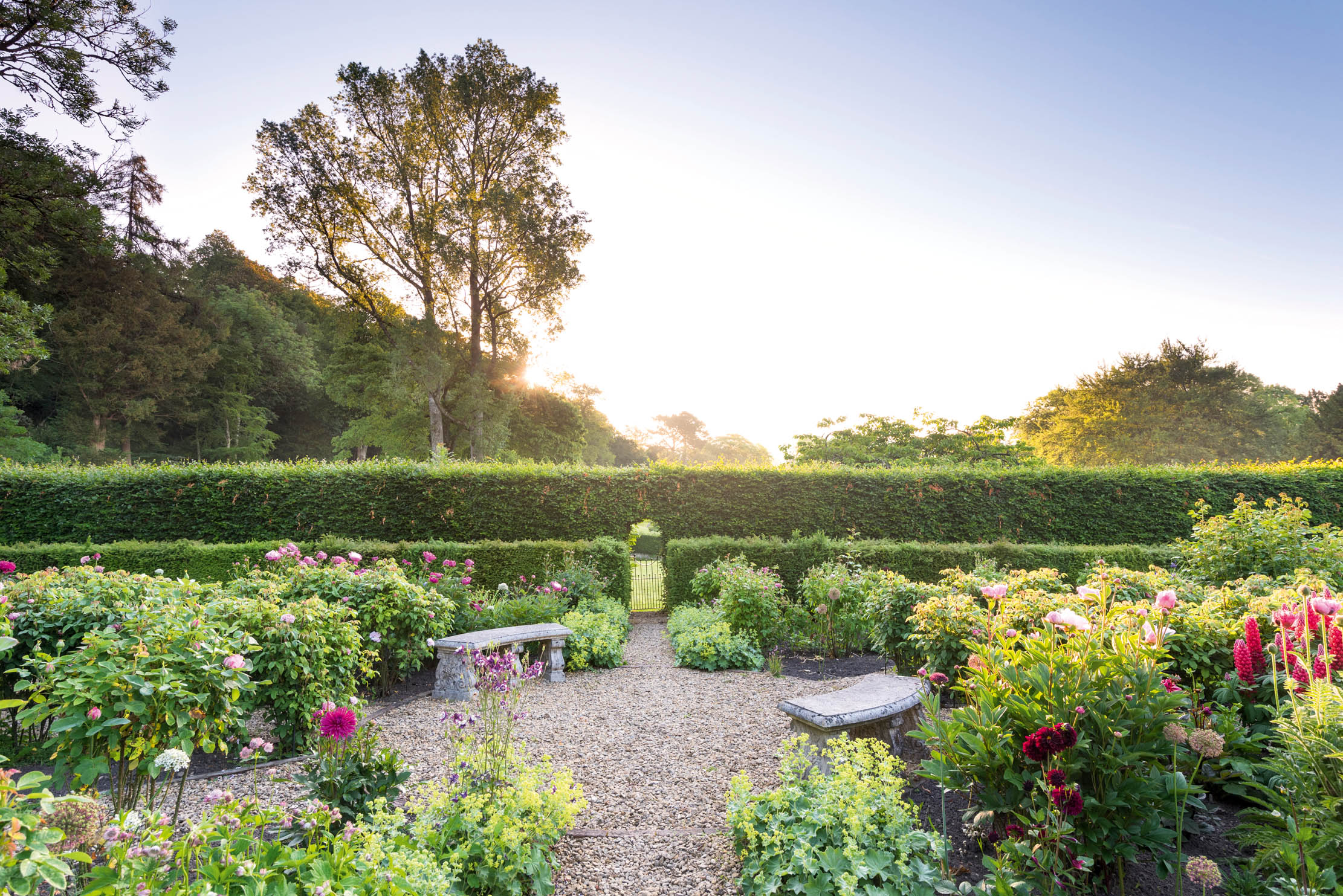
The soil is greensand, with patches of clay. The property has about 9½ acres, evenly divided between cultivated gardens near the house and ancient woodland behind. It faces south and east and warms up quickly in spring, so that the bluebells seem always to flower a week or so earlier than elsewhere.
Gardening was an enthusiasm that the de La Morinières shared. Hervé was originally French, but lived in this country for 40 years. He was a man of remarkable sensibilities, but also a most knowledgeable plantsman. He had that unusual ability to foresee and project the effect of designs and plantings and he could always answer the question that most gardeners ask about a possible addition or alteration: ‘Will it belong?’ His interest in gardening dated back to his childhood in his grandparents’ estate in the Perche, where he developed his love of potagers and cutting gardens full of flowers.
He also remembered the millions of cyclamen that carpeted the woods and avenues in autumn at La Haye, the de La Morinière ancestral estate in the Vendée. A walk around the woodland at Knoyle with Hervé was an education in botanical understanding, horticultural excellence and aesthetic awareness. Gardens are always changing: old trees die, ashes need to be felled, gales open up areas for replanting. Hervé seized these misfortunes as opportunities, so that the plantings have always been constantly improved.
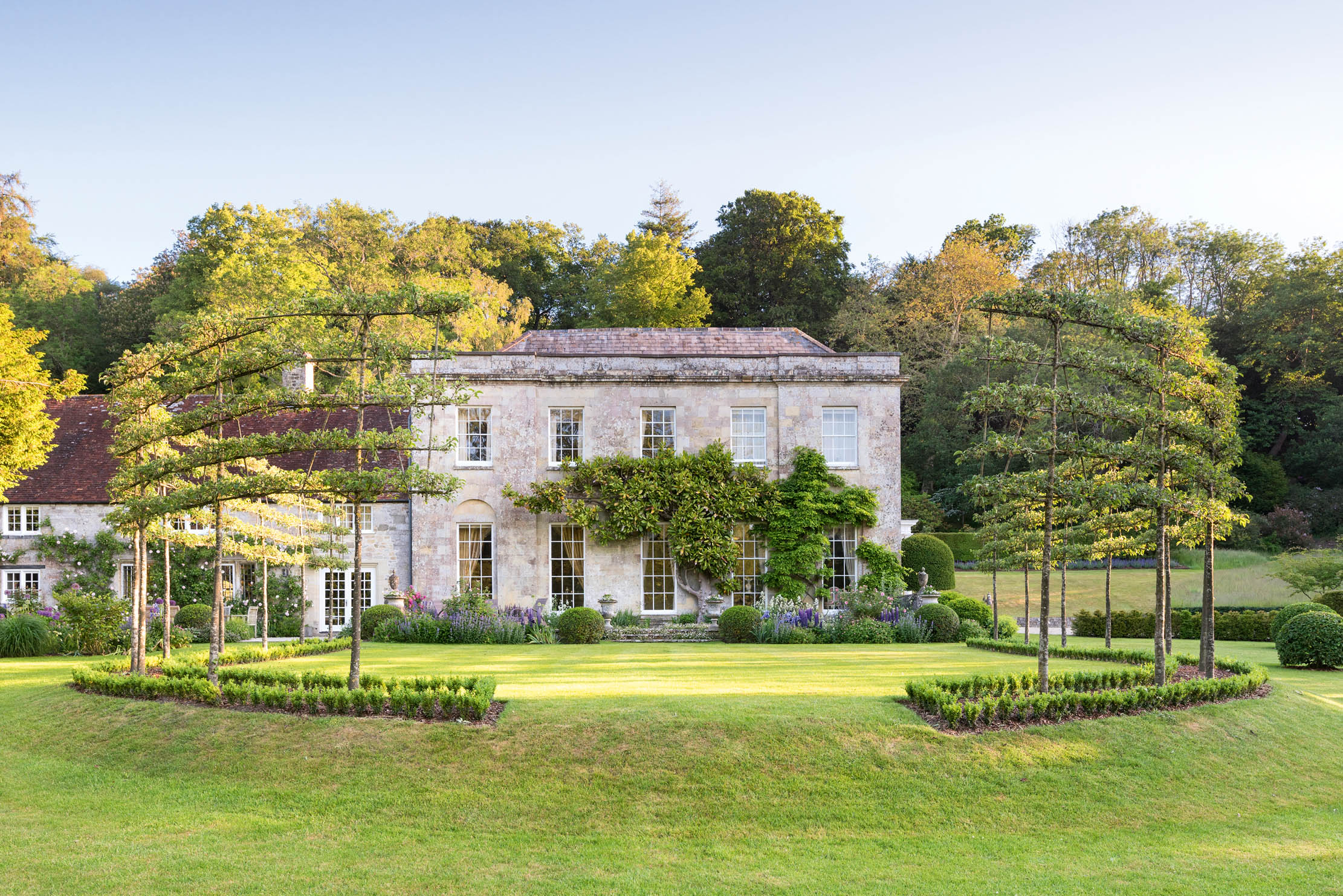
Comtesse de La Morinière is English and was brought up at The Salutation, the beautiful house and garden designed by Sir Edwin Lutyens at Sandwich, Kent, in 1911–12. She has a fine eye for form and colour and is responsible for the subtle colour combinations in the extensive herbaceous borders. The Comtesse makes the annual choice of tulips and is a knowledgeable rosarian, with a fine collection of old-fashioned roses and modern classics bred by the late David Austin.
Exquisite houses, the beauty of Nature, and how to get the most from your life, straight to your inbox.
One of her most successful compositions, near the house, is a white-and-purple border planted with alliums, astrantias, hardy geraniums, rue, lupins (including ‘Polar Princess’, a particular favourite), peonies, pale-blue Iris ‘Jane Phillips’ and white foxgloves; structure is given by such shrubs as the old Hybrid Musk rose ‘Penelope’. The alliums include ‘Gladiator’, ‘Pinball Wizard’, ‘Round ‘n’ Purple’ and ‘Purple Rain’, which work well together in the mixed planting.
A statue of a dwarf, with a sphinx on his helmet, guards the turning circle in front of the house; he is thought to be Sir Jeffrey Hudson, the favourite of Queen Henrietta Maria. The nearby ‘French’ garden is charming — an enclosure on the lowest terrace of the woodland garden, edged by lush yew hedges. It was planted with herbaceous borders in the Edens’ time, but the de La Morinières replaced them with elegant ribbons of low box hedging, interspersed with slightly taller cubes and pyramids, also of box.
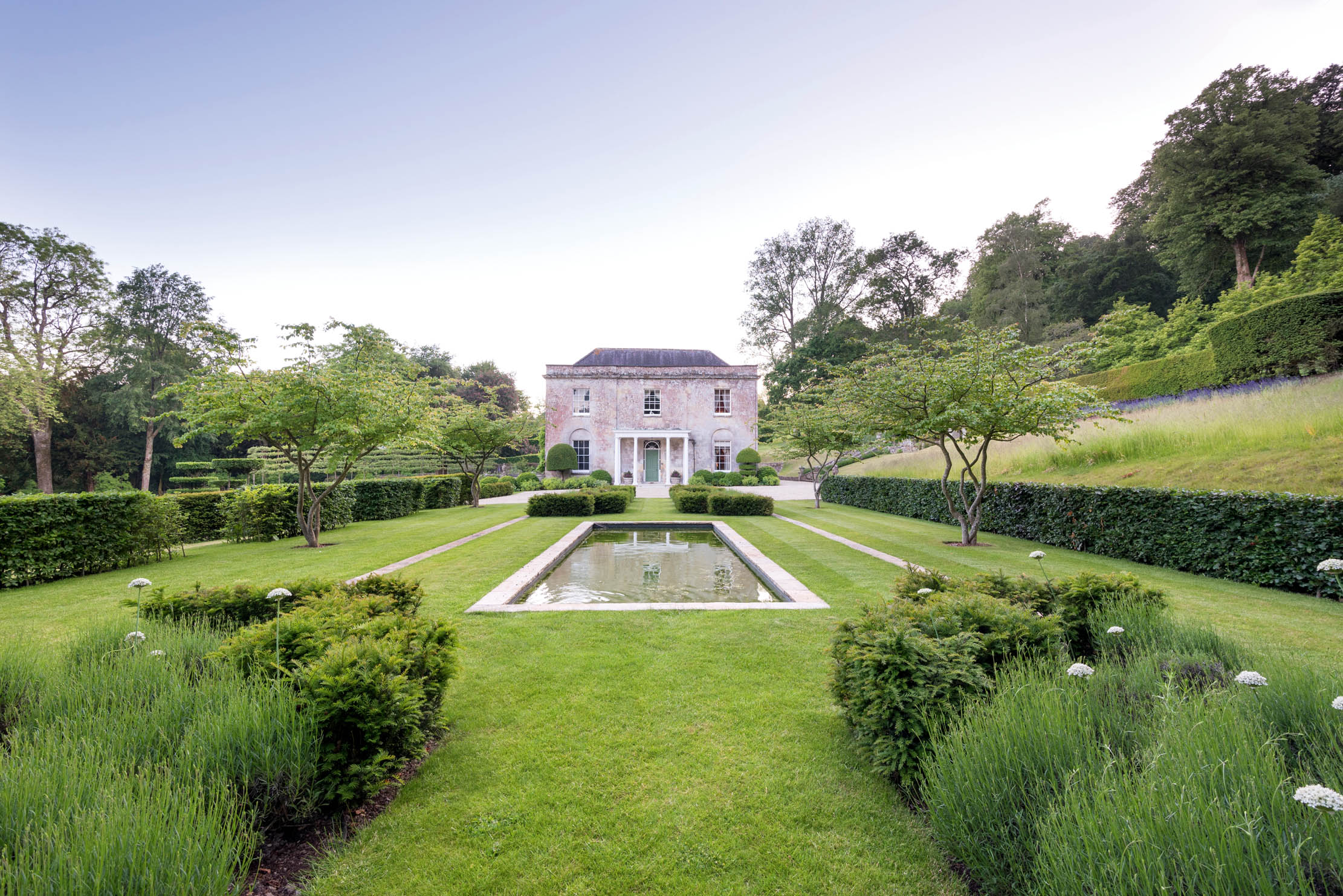
At the centre is a fine fountain that came from Talisman, Ken Bolan’s antique repository in nearby Gillingham. Two handsome urns are planted with seasonal bedding and bulbs, as eight slender, elegant cones, faced with mesh to deter greedy deer, support vigorous roses, such as ‘Climbing Iceberg’ and ‘New Dawn’. The design and proportions are satisfying at every season, as is the succession of colour from the restrained planting. As with so many good gardens, the more you look, the more you notice and admire.
The steep woodland is a waterfall of bluebells in spring and the south-facing slope means they flower very early in the season. The de La Morinières have added extensive plantings of rhododendrons, maples, camellias, azaleas and many other small trees and shrubs. There are four paths through the woodland, running from end to end at different levels. The paperbark maple Acer griseum is a particular feature, especially noted for its elegant leaves, its autumn colour and its red-orange trunk and branches. Heptacodium miconioides is also a great success, now an 8ft bush and destined to double its size.
On the edge of the woodland, the specimen trees include a variegated tulip tree Liriodendron tulipifera ‘Aureomarginatum’, planted by Sir John Eden, as well as splendid dogwoods and a vigorous Ginkgo biloba added by the de La Morinières. Ferns, also among their favourites, are planted throughout the woodland. Wild foxgloves extend the season of interest well into June.
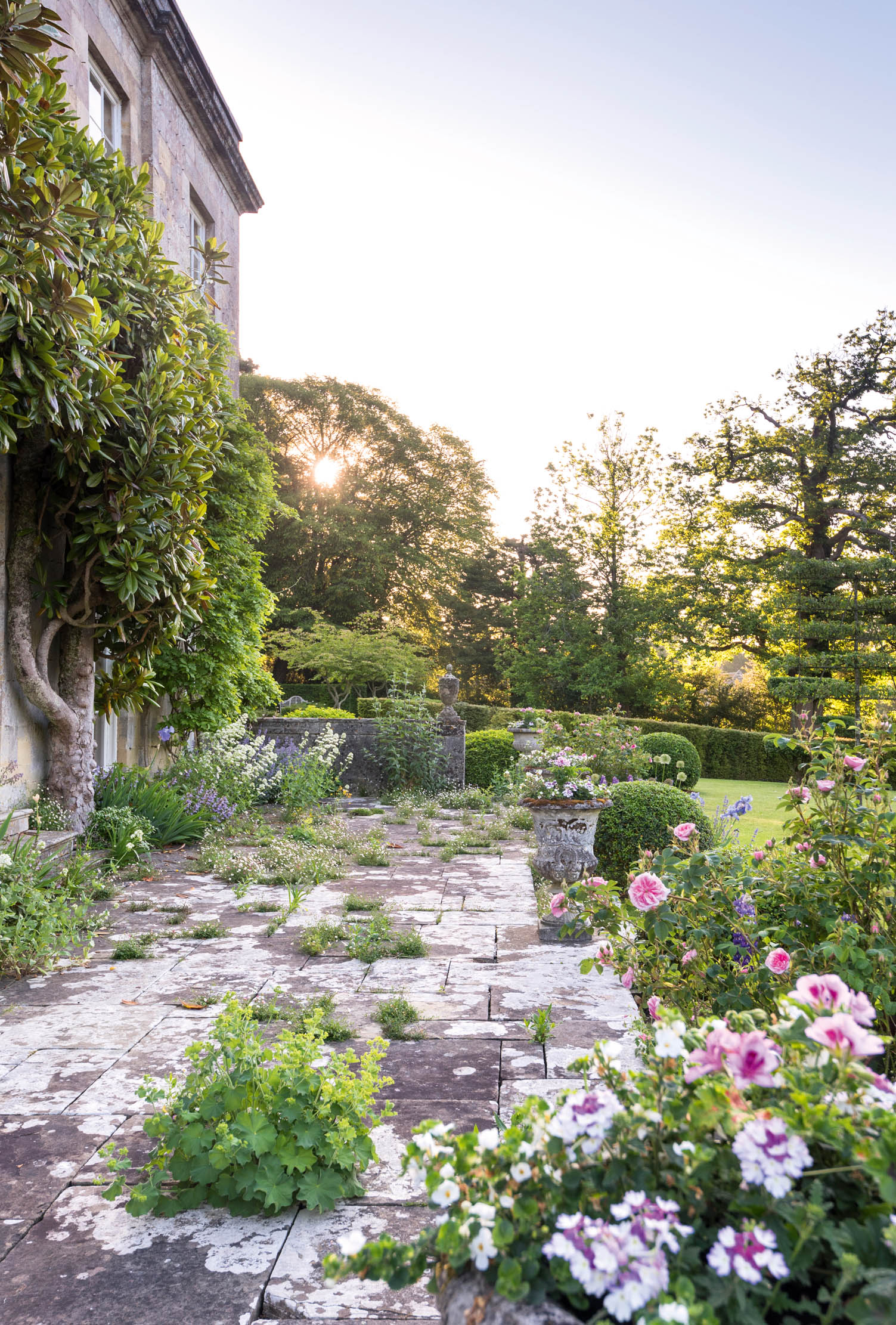
Two of the great successes at Knoyle Place are the cutting garden and the potager, both of which call to mind the gardens that Hervé and his twin brother so loved in their French childhood. The cutting garden, hidden within a stepped hedge of yew and beech, has a most striking central walk, lined on either side with a dense border of the old Portland rose known as ‘Jacques Cartier’. It is one of the best old roses for cutting, impervious to rain, and it flowers again and again all the way through to late autumn. Old roses dominate the cutting garden for much of the year, but the planting is informal and they are mixed with dahlias, peonies and irises to create not only a wonderful resource for flowers to cut for the house, but also a rich and dense composition in its own right. Lupinus ‘Bishop’s Tipple’ and Papaver orientale ‘Patty’s Plum’ are particularly handsome just before the roses start to flower.
The cutting garden adjoins the beautiful and immaculate potager, now maintained on a share-cropping basis with a friendly neighbour. The beds are raised up and held in place by strips of woven hazel. A particular favourite of the de La Morinières is the soft-leaved lettuce ‘Clarion’, which carries an Award of Garden Merit from the RHS.
The garden enjoys magnificent views for many miles across the Blackmore Vale towards Win Green on the edge of Cranborne Chase, but Hervé and Lizie decided that the house did not sit well on a sloping lawn that ran down to the public road below. In 2017, they concluded that the answer was to level it up, so that the main façade had a proper base line. They asked the up-and-coming designer Daniel Combes, who lives nearby, to undertake the work — and gave him all credit for the success of his improvements.
The new flat lawn underpins the relationship between the house and garden. It is enclosed by a tall screen of espaliered crab apples (Malus ‘Evereste’), the effect of which is very striking, both when flowering in April and when bearing fruit and leaf-colour in October and November — and the planting does, indeed, screen the house from the public road. Mr Combes was also the originator of the beautiful pale herbaceous plantings that surround parts of the new lawn.
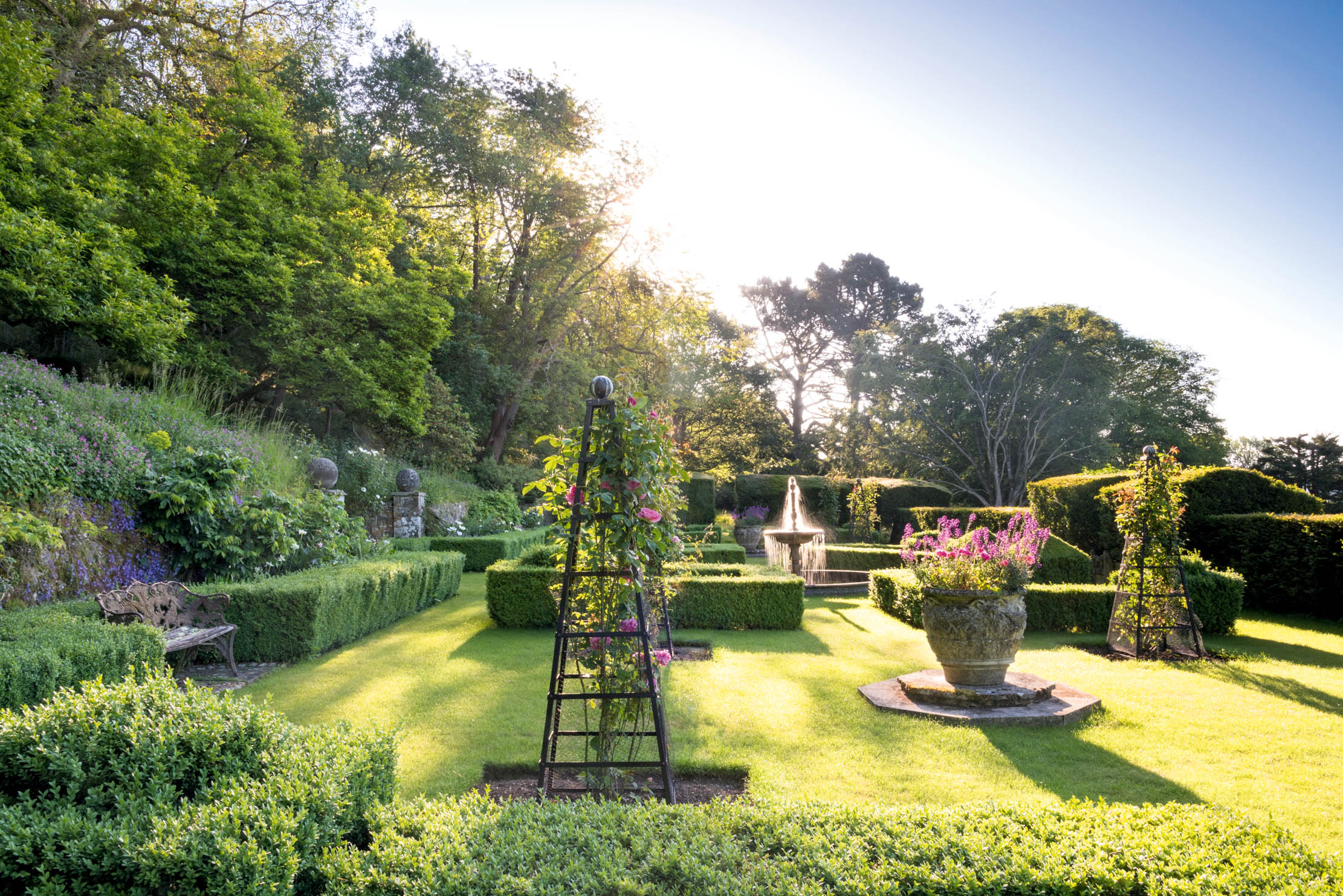
At the same time, the de La Morinières decided that the old croquet lawn, facing the front door to one side of the house, should be replaced by a more structured feature. Mr Combes’s solution was to place a substantial urn, 8ft high, as a focal point at the far end and to create a formal garden of lavender-filled parterres, with a long reflecting pool in between. This entire garden is lined on either side by multi-trunked Persian ironwood trees, Parrotia persica, the foliage of which brings a welcome blast of colour in autumn, some weeks before other trees start to turn in the garden and woodland.
The gardening at Knoyle Place is a battle against pests. Deer are a major nuisance — muntjac and roe — and new plantings must be protected against them. Rabbits and grey squirrels also do damage, but are tolerated. Normally, the garden is open for the National Gardens Scheme, but not this year, because the date that the de La Morinières originally chose would now conflict with celebrations for The King’s coronation. Look out for Knoyle in the Yellow Book of the NGS in 2024. It is worth a long journey to visit — beautifully maintained and with so much from which to learn.
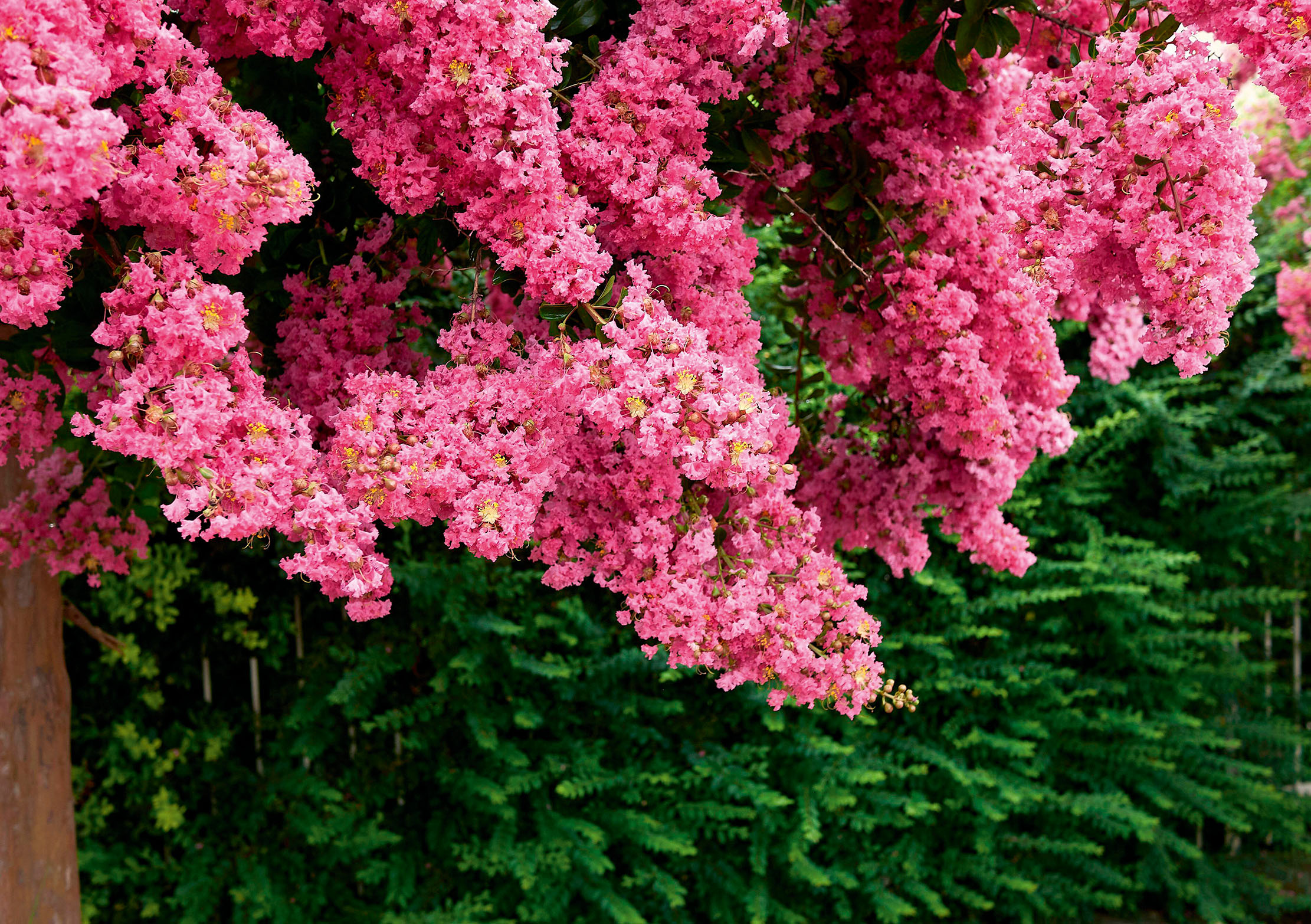
Charles Quest-Ritson: In praise of climate change
'Scorn the batty arguments of those who deny that changes have happened and are happening,' says our columnist. And while
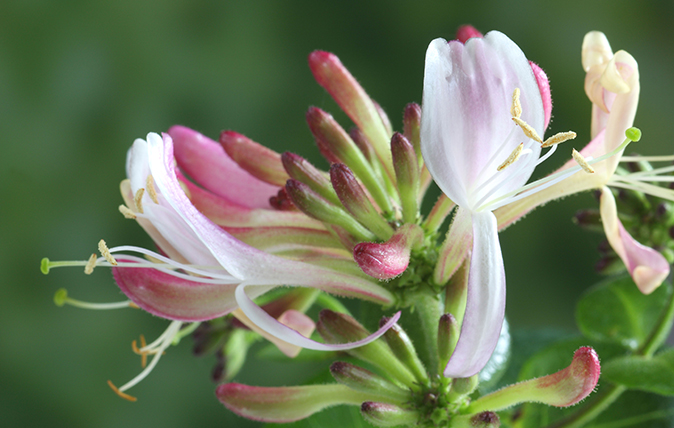
The best honeysuckle to grow in your garden – especially if they’re gifts from now-departed friends
Charles Quest-Ritson extols the virtues of delightful honeysuckle.
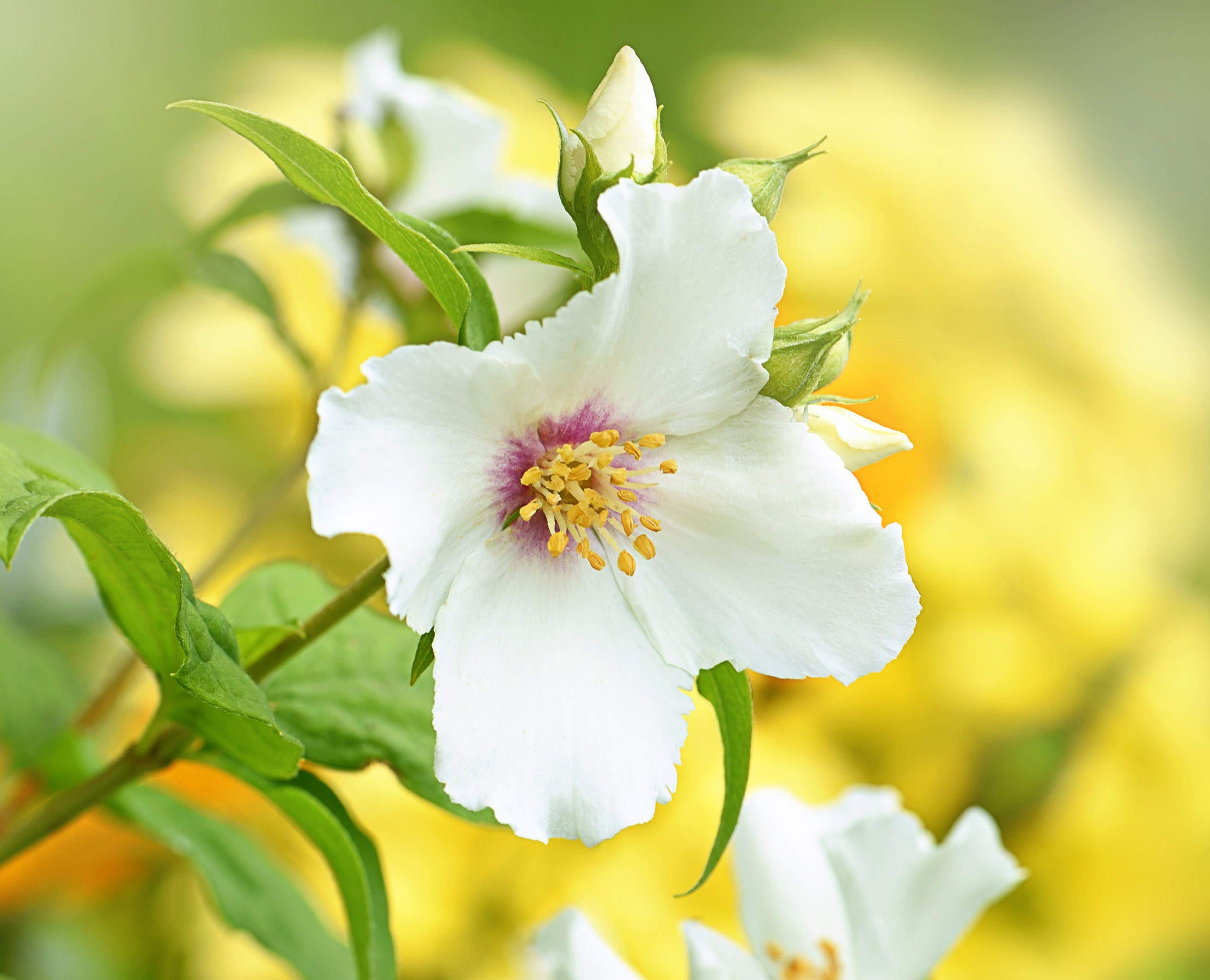
Credit: Getty Images
Charles Quest-Ritson: Why every gardener in Britain should be growing philadelphus
Charles Quest-Ritson's list of flowers that every garden should own includes the usual names — rose, daffodil, clematis. But he'd also
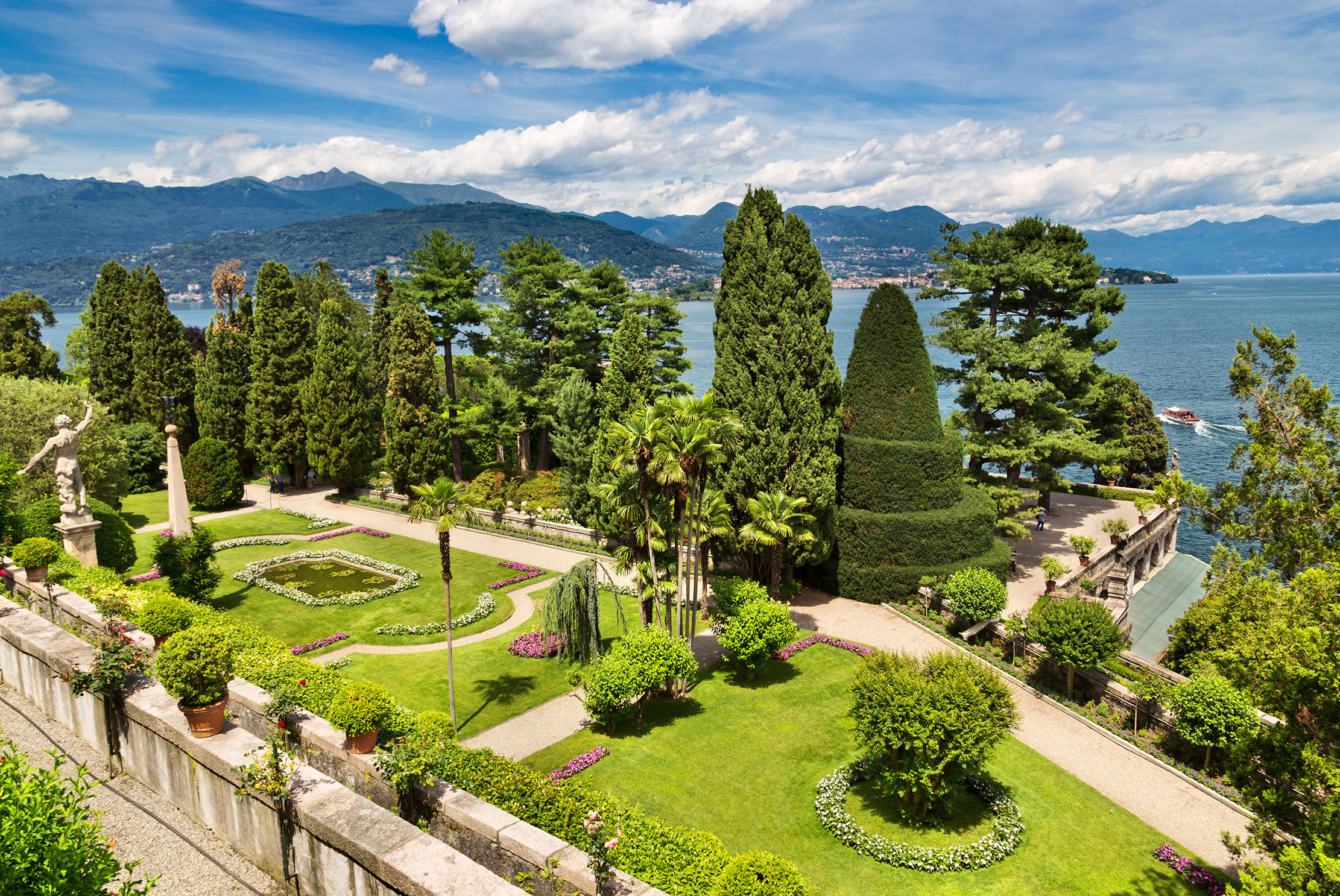
Charles-Quest Ritson: 'Gardens are like people — most of them don’t age well'
Charles Quest-Ritson reminisces on his younger days and laments the passing years — not least our shared tendency with gardens to

Charles Quest-Ritson: The secret to enjoying gardens in beastly cold, deepest winter
Our columnist has a suggestion for enjoying January, albeit one that doesn't involve staying put in England.
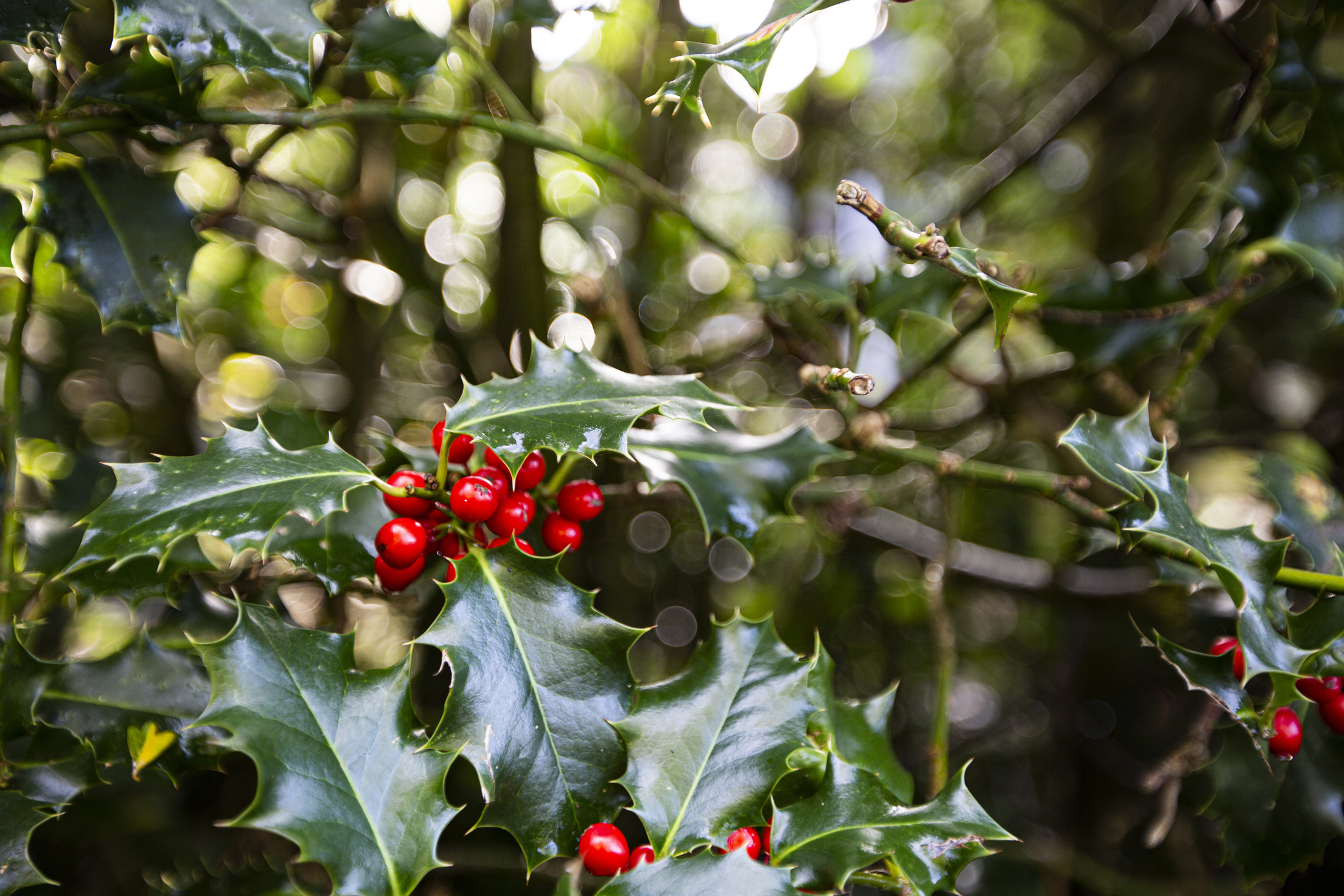
Credit: Getty Images
The best holly to grow in your garden — and how to make sure it's the right sex
Charles Quest-Ritson takes a look at the surprisingly tricky world of growing holly.
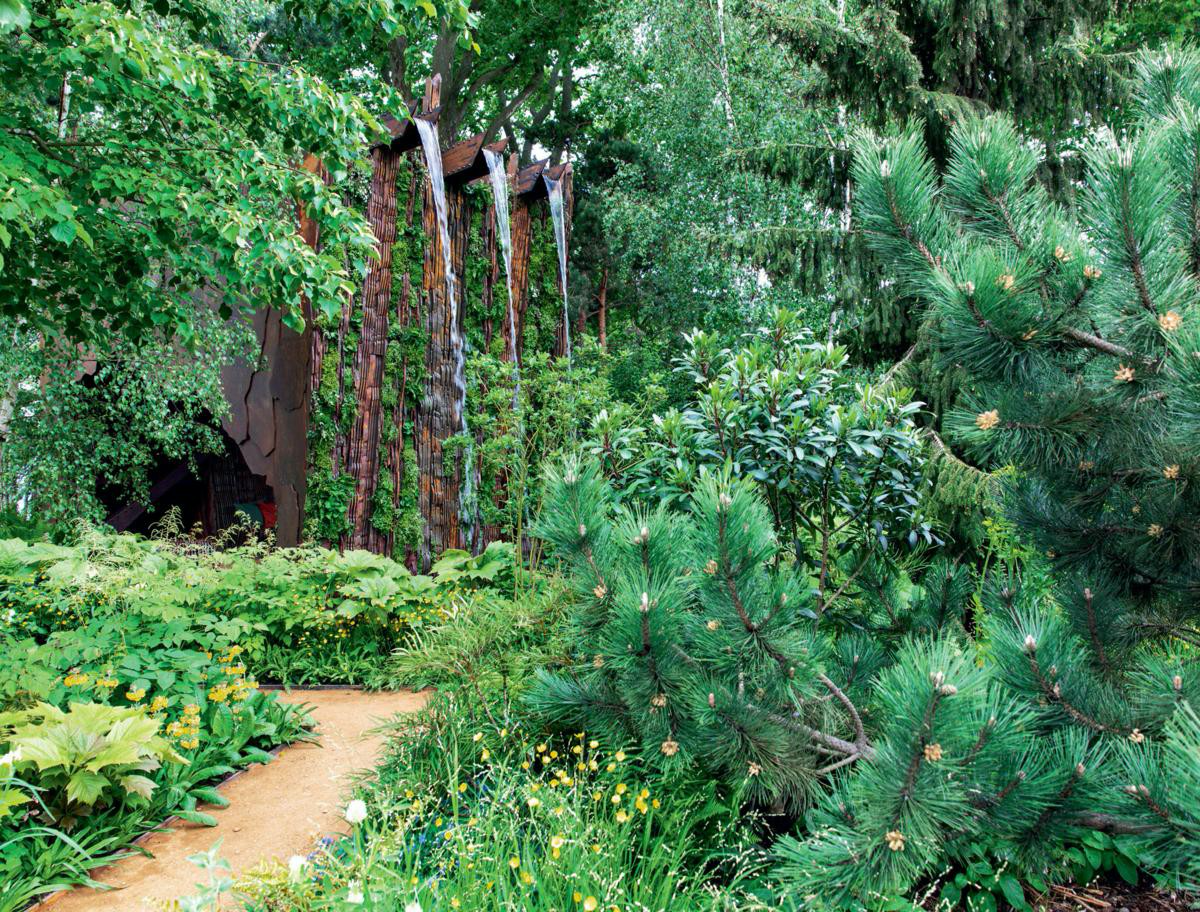
Charles Quest-Ritson: The dismal mistake made by the RHS's judges with the 'best in show' award at Chelsea
'A jumble of rewilding and beaver dams' won the 2022 RHS Chelsea Flower Show best in show, and Charles despairs
Charles Quest-Ritson is a historian and writer about plants and gardens. His books include The English Garden: A Social History; Gardens of Europe; and Ninfa: The Most Romantic Garden in the World. He is a great enthusiast for roses — he wrote the RHS Encyclopedia of Roses jointly with his wife Brigid and spent five years writing his definitive Climbing Roses of the World (descriptions of 1,6oo varieties!). Food is another passion: he was the first Englishman to qualify as an olive oil taster in accordance with EU norms. He has lectured in five languages and in all six continents except Antarctica, where he missed his chance when his son-in-law was Governor of the Falkland Islands.
